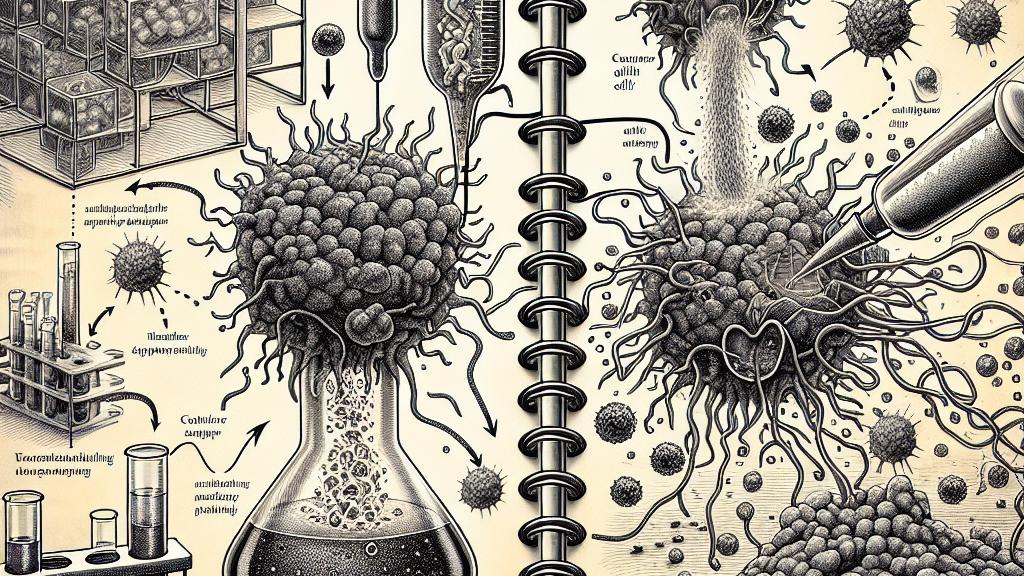Copper-Binding Peptides Nanofibers and Their Impact on Cancer Cells
Overview
- Uncover the revolutionary nanofibers that target and disrupt cancer cells through copper-binding techniques.
- This innovative approach selectively depletes copper within tumors, paving the way for novel therapeutic strategies.
- With potential to change cancer treatment significantly, this research enhances our understanding of tumor biology.

The Pivotal Role of Copper in Cancer Cell Growth
A recent study conducted in Germany uncovers an intriguing fact: cancer cells have a voracious appetite for copper. Unlike healthy cells, which regulate copper levels carefully, tumors require significantly more copper to fuel their rapid growth and reproduction. Researchers at the esteemed Max Planck Institute for Polymer Research seized this insight and crafted a bold new strategy. By creating nanofibers from copper-binding peptides, they developed a method that effectively siphons copper away from cancer cells. This process led to a jaw-dropping result where over 85% of breast cancer cells in culture died within just 72 hours! Such compelling outcomes highlight the potential of disrupting copper metabolism as a groundbreaking approach in cancer therapy, showcasing how targeted interventions can offer fresh hope in the ongoing battle against cancer.
How the Nanofibers Work: A Deep Dive into Their Mechanics
The ingenuity of this research lies in the meticulous engineering of the copper-binding nanofibers. At their center are components derived from the copper-binding chaperone Atox1, which has a natural affinity for capturing copper. Once these nanofibers infiltrate cancer cells, something remarkable happens: they not only enter but aggregate into a dense network that maximizes their ability to seize copper ions. Picture a colony of these tiny fibers weaving through the cellular landscape, methodically draining the copper reserves even in the face of cellular defenses. This relentless depletion disrupts the delicate balance within the cancer cells, pushing them into an overstressed state that ultimately leads to their demise. This striking fusion of nanotechnology with biochemical savvy not only broadens our horizons regarding new therapeutic possibilities but also provides concrete examples of how science can deftly exploit cancer's vulnerabilities.
Imagining the Future: The Promise of Advanced Cancer Therapies
While the findings of this study are undeniably groundbreaking, it is vital to maintain an optimistic yet cautious outlook as we consider the future impact of this research. This innovative approach signifies enormous strides in understanding and targeting cancer cell vulnerabilities through copper depletion; however, translating this knowledge into clinical practice will take time and perseverance. Imagine a world where cancer therapies can specifically target malignant cells while preserving healthy ones, therefore greatly minimizing the debilitating side effects commonly associated with chemotherapy. If researchers can harness the power of copper-binding peptide nanofibers, we may witness a transformative shift in cancer treatment paradigms—enhancing therapeutic efficacy while significantly improving the quality of life for patients. In conclusion, this research serves as a beacon of hope, illuminating the path forward in the relentless quest for effective cancer therapies.

Loading...